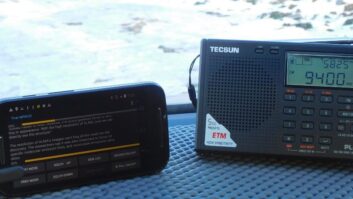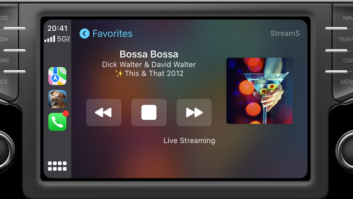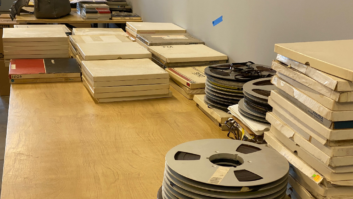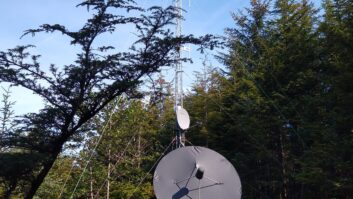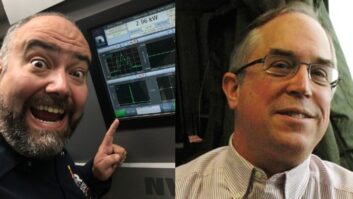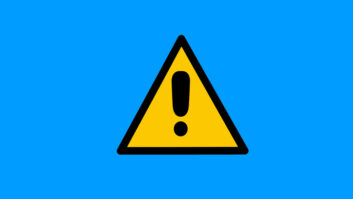Years ago I did some contract engineering for an FM station in the Sandhills of North Carolina.
If you like whacking little white balls with clubs, I’m sure you’ve heard of Pinehurst, the self-proclaimed “Golf Capital of the World.” The place attracts northern retirees who enjoy the game and the warmer weather, making for a disproportionately large elderly population.

Today’s young listeners are more likely to listen to music off an MP3 player or connect to a web ‘station’ that allows them to set up their own playlist. iStockphoto/Martina Ebel
It should come as no surprise that this station was quite successful with an easy listening format. On Saturday evenings, they even did a special program of big band music. At the time (early 1980s), there were many retirees living in Pinehurst/Southern Pines who had grown up with Glenn Miller, Les Brown and Woody Herman. They absolutely loved that show.
The station later increased power to move into a larger market and changed formats. I don’t think they ever made it as successful as they’d hoped. But the original owners knew the secret to good, profitable radio: Give the listeners what they want and do it well.
What brings this to mind is that we’re going to kill ourselves if we’re hard-headed or nearsighted. Cranial impenetrability is insisting on doing things the same way, regardless of whether it’s working; myopia is refusing to see the clear trends.
Where are the young listeners?
Trends, by definition, occur slowly; things don’t change overnight. But recent polls of younger Americans (say, under 25 years old) clearly show that most of these people rarely, if ever, listen to radio nowadays.
While tape and CD made it into our automobiles, these younger Americans are far more likely to take an MP3 player and connect it to the car stereo. At home and in the office, if they want music, they’ll listen to that same player, or to a web “station” that allows them to set up their own playlist.
I won’t get into the classic conundrum: How does one reach the younger listeners while not alienating the older, established audience? Greater minds than mine will have to figure that one out. But since Web radio looms on the near horizon as the Great Boogeyman, I can and will address that.
We remain competitive, especially in automobiles, because no one has figured out how to get truly reliable, wide-area Internet service into vehicles … yet. What will we do when that happens?
The key words here are “yet” and “when.” We have some breathing room in which to work, but we need to make wise use of it. HD Radio was implemented, at least in part, to help compete with new digital delivery methods, but if we ultimately determine that HD-R isn’t doing that, we need to look to something else.
To hedge our bets, we also have to make sure that our web streams are as good as possible. The stations I work at don’t treat streams as throwaway additions; in some cases, especially with our more successful formats, we even use dedicated processing just for the stream.
But I still think that the real answer is the same as what the original owners of that easy listening FM in the Sandhills figured out: Give the listeners what they want, and (aha!) what they can’t get elsewhere.
Those web “stations” that allow you to set up your own playlist are a neat trick, but you know what they can’t do? They can’t do live, real interviews with the listeners’ favorite artists. They can’t easily do traffic, or warn listeners when severe weather is approaching either.
That last one is especially important to me. As Cris Alexander relates elsewhere in this issue, deadly tornados swept through Alabama where I live and work during the last week of April. Hundreds of people lost their lives.
But the consensus among emergency personnel is that broadcasters kept that horrible death toll much lower than it might otherwise have been. We were on it from the moment the first advisories were issued and we stayed on it for days. After the storms, we told survivors where to find basic supplies: Food, water and even ice to keep insulin chilled. My stations took calls from people all over Alabama expressing needs; other listeners would call and say, “I can help.”
Web radio just can’t do that. And neither can a half-hearted, lackadaisically-programmed, fully automated station that just plays the same 30 songs over and over. When a crisis occurs, people want information, not a jukebox.
The real keys to radio, of course, are personalities. People.
Look at the most successful stations, and you’ll see real show hosts who talk to real listeners. They are not just egos with great voices; they are friends with the audience. You’ll see salespeople who treat their clients with care and respect and who genuinely care whether the advertiser gets results. You’ll see engineers who are passionate about how the station sounds, who think of new ways to tinker and get one more ounce of performance from the equipment, and who will give everything they can to keep services alive when an emergency hits.
Simply put — and I believe this with all my heart — you’ll see people who love radio, who believe in radio and who want radio to continue to be a success. It will take some flexibility and an open mind, but if we really want it to happen, it will happen.
Stephen M. Poole, CBRE-AMD, CBNT, is chief engineer for Crawford Broadcasting in Birmingham, Ala.





